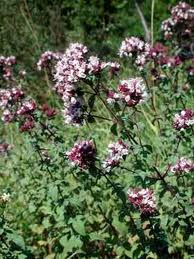GREEK OREGANO - kr34
Have a question?

GREEK OREGANO - kr34
Dettagli
Scientific name: Origanum
Family: Lamiaceae
Brief history and botanical notes on the plant
The name comes from the Greek "oros", mountain, and "ganos", splendor, since plants of this genus are very widespread in the hilly and mountainous areas of the Mediterranean regions. Of the 50 existing species, almost all are native to these localities.
It is a herbaceous, aromatic, perennial plant, with flowers arranged in spikes accompanied by sometimes colored bracts.
Oregano is one of the most used aromatic plants in the kitchen, but not only; Its therapeutic properties are also very important: analgesic, antiseptic, the infusion is recommended for rheumatic pain, coughs and migraines.
Furthermore, oregano is also a good ant repellent.
Main species
There are around fifty species of oregano, among which we remember:
Origanum vulgare is the one we know and which is used for both food and therapeutic purposes. In Tuscany it is called anchovy grass, because it is used to flavor anchovy paste. It is a plant with an erect stem, 30 – 60 cm high, hairy and rather branched, with petiolate and lanceolate leaves, green in the upper part while the lower part is lighter due to the hair that covers it. The very small flowers are generally pink, rarely white, in dense, terminal spikes then gathered into a panicle. They are accompanied by purple or, sometimes, green bracts. It is a spontaneous plant in the wild areas of our entire peninsula, however it is cultivated for the condiment use of the leaves, both fresh and dried, for the flowers which are used for the extraction of the essence which is used in perfumery or in flavoring of some liqueurs including Arquebuse. Furthermore, it is also considered a good honey plant, since bees seem to really like the nectar of its flowers.
Origanum dictamum is the most widespread species for ornamental purposes. It is only 30 cm high and is used to form borders or small bushes at the edge of a lawn.
Origanum majorana, commonly called marjoram, is a perennial species, about 50 cm tall, woody at the base. It is native to Central Asia, Arabia and Northern Africa, but is widely cultivated in Italy and in some places even grown wild. It is an aromatic plant but the leaves, fresh or dried, are mainly used to flavor many foods.
Origanum onites. This species, typical of arid and stony places, is spontaneous in Italy only in some locations in Sicily, but is present in all coastal locations of the Mediterranean. It has the same therapeutic properties as oreganum vulgare, but is inferior in terms of aroma and flavour.
Origanum virens is found in the mountains of central Italy.
Origanum compactum is a species used only as an aromatic.
Origanum syriacum little used in Italy. Its taste is a mix of oregano, marjoram and thyme.
Cultural care and processing
Oregano is a rustic plant, which loves sunny positions and well-drained soil. Both aromatic and ornamental species do not need particular cultivation techniques. Indeed, oreganum vulgare thrives precisely in poor and arid soil. Grown in shaded areas the quantity of essential oils decreases significantly.
Oregano prefers dry soil, it needs a lot of water only when the plant is very young. It fears water stagnation which causes rotting of the roots.
Flowering and pruning
Flowering occurs from June to September, and the seeds ripen from August to October.
As far as pruning is concerned, it is mainly a matter of eliminating damaged or dry parts, to avoid the onset of diseases.
Multiplication
The quickest method of propagation is dividing the tufts in spring. As for ornamental species, cuttings can be used.
However, they can all be sown at the beginning of spring, in March, without covering the seeds given their small size, but by compressing the soil only a little and watering it frequently.
If you plan to sow in pots, the seeds should be sown at the beginning of spring in a compost made up of equal parts fertile soil and sand. Once the seedlings are large enough they can be moved to their permanent location.
Multiplication by cuttings must be carried out in June, while multiplication by division of the plant must be carried out in March or October.
The flowering tops are harvested at the beginning of flowering, cutting all the branches. The latter must immediately be dried upside down in a dark and well-ventilated place, so that it does not lose its characteristics. Once dried, the flowers and leaves are recovered, crumbled and stored in a glass jar.



